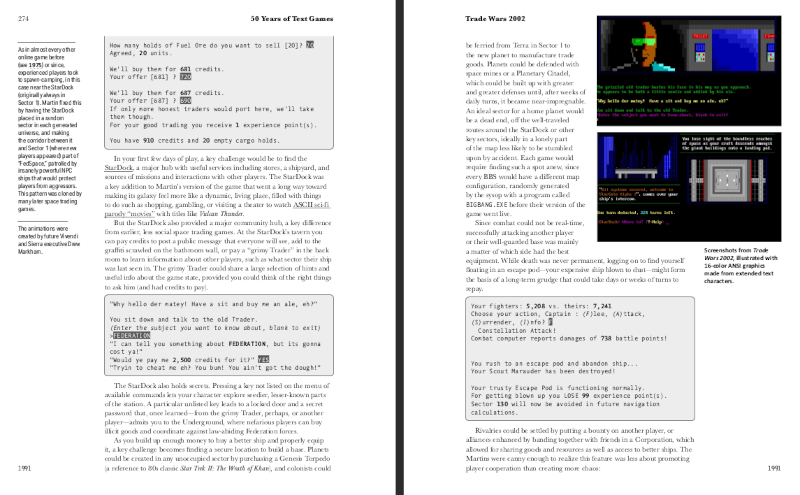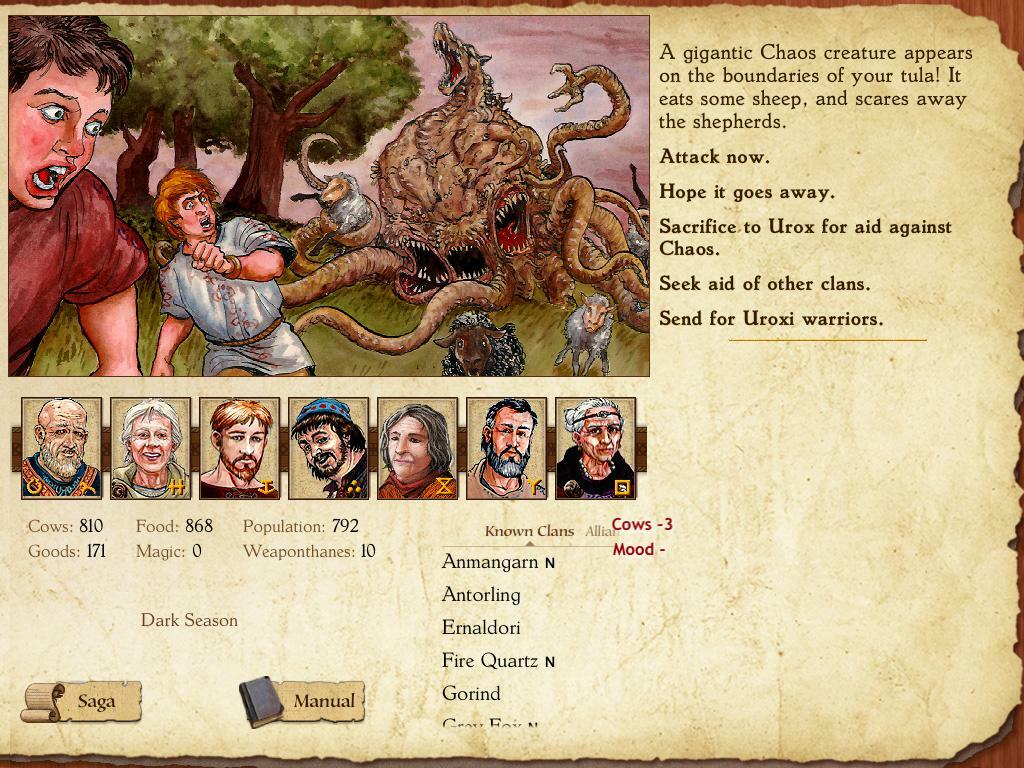50 Years of Text Games
Reviews
Please sign in or register to add your own review.
When we pick up a hefty tome by our favorite author, we understand that our minds will transport us into the story, with or without illustrations. Yet, with computer games, the absence of graphics or sound effects may strike many people as quaint and old-fashioned.
“50 Years of Text Games” by Aaron A. Reed makes it clear that this is itself an anachronistic way to think about games. The technology for multimedia is today both cheap and ubiquitous: hardly worth remarking upon. Screens are the canvas, the stage, and the empty page, on which any kind of story can be played. And the world of text games, it turns out, is more rich and vibrant than ever.
An enduring form of play
The $523,813 raised on Kickstarter to produce the book speak to the enduring interest in the genre, and can also be credited to Reed’s bona fides. The author’s work in interactive fiction over more than two decades includes narrative design, academic study, and a prior book teaching game development.
What is a text game? “In brief,” Reed writes, “it’s a game you want to share excerpts from, not screenshots.” Not all the games described in the book are completely without visuals, but they focus on tales and experiences conveyed through written or spoken text. They also feature at least some interactivity: the concept of a player rather than just a reader is meaningful in all of them.
After introducing the origins of text gaming before the 1970s, Reed’s approach is to pick a game for each year from 1971 to 2020, and to reflect upon its development, narrative, gameplay, and contribution to the genre.
Even if you are a longtime fan of text games, these are not necessarily the titles you have heard of. Instead of being guided by popularity alone, Reed has curated games that tell stories about the diversity of the genre and the many innovations within it.

Excerpt from the ebook for the year 1991 entry, about the BBS game “Trade Wars 2002”. The book features many quoted transcripts from the games. The printed book is in black and white. Credit: Aaron Reed (text) and original developers (screenshots). Fair use.
Masterful curation
Reed has shared first revisions of each of these chapters in his Substack newsletter. The links below point to those early revisions, though interested readers are advised to purchase the book for the final versions. Here are a few examples of Reed’s curatorial approach:
-
1979 - “The Cave of Time”. This is not a computer game, but the first “Choose Your Own Adventure” gamebook. Its inclusion reflects how game design in print and on screen can inform one another. Reed does not mention it, but the CYOA books have themselves inspired a fascinating interactive fiction game called “The Boy in the Book” (review).
-
1981 - “His Majesty’s Ship ‘Impetuous’”. This little-known title is noteworthy because of its mechanics. Here, instead of typing commands like “GET LAMP”, as was common for most early text adventures, the player completes gaps in the story as it unfolds. For example, the game may prompt the player to write a line of dialogue for the protagonist. The software then matches on keywords to infer the player’s intent, and continues the story.
-
1987 - “Plundered Hearts”. This classic text adventure by Infocom featured a female protagonist who can romance a male love interest in a pirate adventure. Instead of pursuing romance, the player can choose to ditch the guy and become a fearsome pirate queen instead. Unlike many titles before it, the game prioritizes a compelling plot over punitive and immersion-breaking puzzles.
-
1999 - “King of Dragon Pass”. Through many meaningful choices, you help a small tribe to survive and thrive in a fantasy setting. The game features vast amounts of procedurally generated text and comparatively minimalist graphics. Despite a large budget, it was a commercial failure when it was released. Today it is a cult hit that has found many new players, thanks to online distribution through platforms like Steam and GOG.
-
2005 - “Shades of Doom”. This is a first-person shooter for visually impaired players, in which complex audio cues are used to set the scene for exploration and combat. Text games are often more accessible to visually impaired players than other video games; this title makes it clear that “text” does not have to mean “no action”, or even that the text is displayed on a screen.
Each game is covered in a few pages. Thanks to the wide range of styles and stories, I enjoyed reading through the whole book, rather than just picking and choosing titles that seemed appealing. The book also includes an introduction for each decade, which names many other notable titles that readers may wish to look up.

“King of Dragon Pass” is perhaps the most richly illustrated of all the games featured in the book, but even here, it’s the procedurally generated text that takes center stage. (Credit: A. Sharp. Fair use.)
The Verdict
For readers who are interested in narrative design, the culture of games, or interactive fiction as a genre, I strongly recommend seeking out a copy of “50 Years of Text Games”.
It’s a book brimming with ideas that should inspire anyone to create and play, and to experience the full range of what games can be. It’s also a labor of love by the author, whose meticulous attention to detail and thoughtful curation make this one of the best books about games I’ve ever read.
While Reed takes great care to identify potential spoilers for the games, this is not a book for hints or walkthroughs. Similarly, if you’re looking specifically for a book about, say, Infocom-style parser games, you should know that Reed explores the full breadth and depth of what text games can be, and does not limit himself to any narrow definition.
As of this writing, the print edition of the book is sold out, but an ebook version is available.
About
-
-
Show uploaded media
Uploaded media:
50y-1692503739631.png
Excerpt from the ebook for the year 1991 entry, about the BBS game "Trade Wars 2002". The printed book is in black and white.Credit: Aaron Reed (text) and original developers (screenshots). Fair use.Source: own screenshot from PDFdragonpass-1692503903663.jpg
"King of Dragon Pass" is perhaps the most richly illustrated of all the games featured in the book, but even here, it's the procedurally generated text that takes center stage.Credit: A. Sharp. Fair use.